- 1. Key Takeaways
- 2. Things to Consider Before Visiting Zion National Park
- 2.1. How Many Days Do You Need to Spend in Zion National Park?
- 2.2. Where to Stay in Zion National Park
- 2.3. What to Wear When Visiting Zion National Park
- 3. Best Things to Do in Zion National Park
- 3.1. Do the Zion Canyon Scenic Drive
- 3.2. Hit the Zion-Mount Carmel Highway
- 3.3. Hike Zion’s Scariest Trail: Angels Landing
- 3.4. Hike the Zion Narrows
- 3.5. The Subway
- 3.6. Enjoy the Views of the Court of the Patriarchs
- 3.7. Hike to the Emerald Pools
- 3.8. Drive through the Zion-Mount Carmel Tunnel
- 3.9. Check Out the Checkerboard Mesa
- 3.10. See the Zion Human History Museum
- 4. Final Thoughts
- 5. FAQs
- 5.1. Is Zion National Park free?
- 5.2. Can you do Zion in a day?
- 5.3. Can you drink Zion water?
- 5.4. Can you drive yourself in Zion?
- 5.5. Is it safe to hike in Zion alone?
- 5.6. What should I pack for Zion National Park?
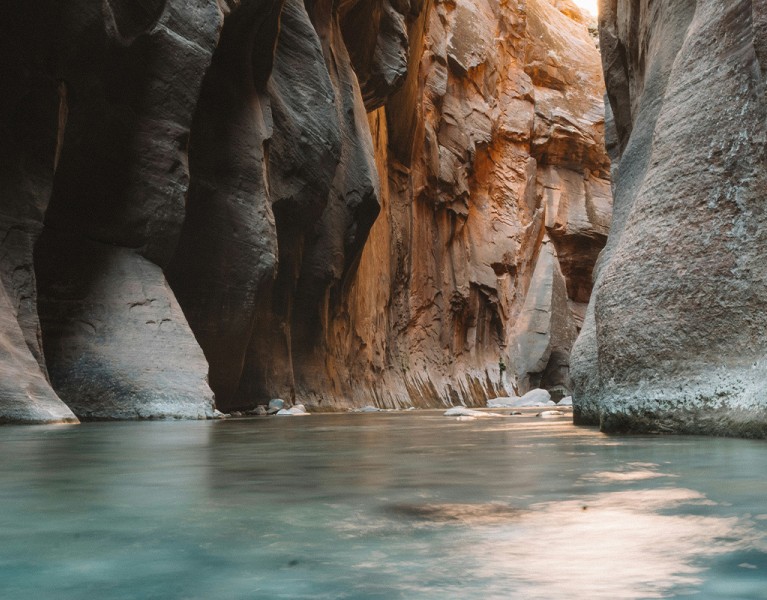
Explore the Beauty of Zion National Park - Best Things to Do
Table of Contents [Show]
Zion National Park is a corner of Utah that transports its visitors into a fairytale world from the Jurassic Period.
Over 240 million years ago, the Zion landscape was a simple basin around the sea level. Over millions of years, Mother Nature has done her magic, forever changing this landscape.
Today, Zion National Park is a labyrinth of soaring sandstone cliffs, deep ravines, natural arches, and hidden river valleys. The major highlight, however, is the canyons, which have been a refuge or sanctuary to wildlife and humans alike for thousands of years—hence the park's name.
Zion National Park is famous for being home to some of the best hikes in the US. But hiking is only one of the many things to do here. From snapping the best sunset/sunrise photos, splashing in spring waterfalls, horseback riding, and standing at the edge of the most breathtaking overlooks in the Midwest, these are the top 10 Zion National Park things to do!
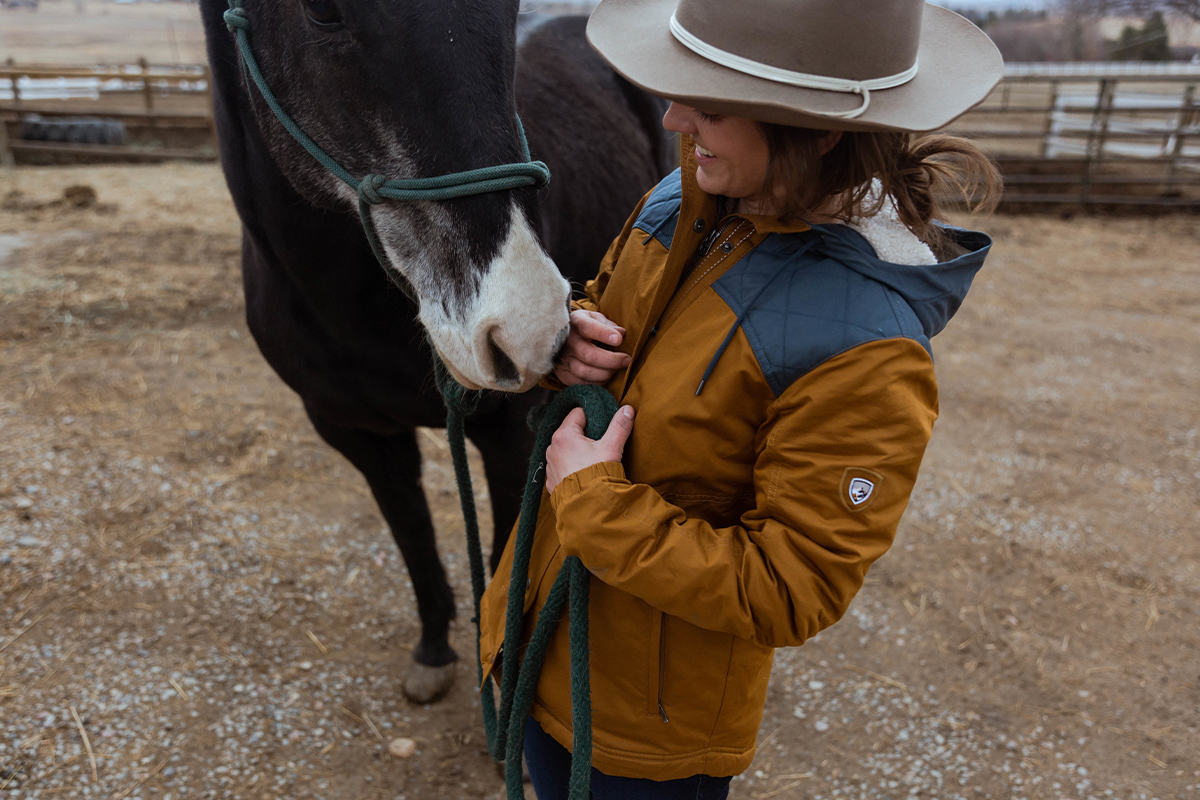
Key Takeaways
- You need 2-3 days to experience most of the best things to do in Zion National Park.
- Zion Canyon Lodge is the only lodge inside Zion National Park. Reservations are highly recommended.
- Camping in Zion National Park is allowed in Watchman, South, and Lava Point campgrounds.
- Both Watchman and South Campgrounds in Zion National Park can accommodate RVs. Both have a dump station, but only Watchman Campground has electric hookup sites.
- The four major scenic roads in Zion National Park are Zion Canyon Scenic Drive (6.2 miles), Zion-Mount Carmel Highway (12 miles), Kolob Terrace Road (25 miles), and Kolob Canyon Road (5 miles).
Things to Consider Before Visiting Zion National Park
Zion National Park is located in southwestern Utah near the Arizona and Nevada borders. It’s a popular destination for people visiting:
- Page, UT (118 miles)
- Salt Lake City, UT (307 miles)
- Las Vegas, NV (163 miles)
Utah’s most visited national park and among the top five in the nation, Zion National Park is a two-hour drive from Bryce Canyon and about four hours from Grand Canyon. It’s common for visitors to explore these three legendary national parks on the same itinerary, given their proximity.
Zion National Park is accessible from Interstate 15 and State Route 9. If you plan to arrive by air, the closest airport to Zion National Park is St. George Regional Airport (SGU), about 45 minutes away. The closest major airport to Zion National Park is Harry Reid International Airport in Las Vegas (about 2.5 hours away).
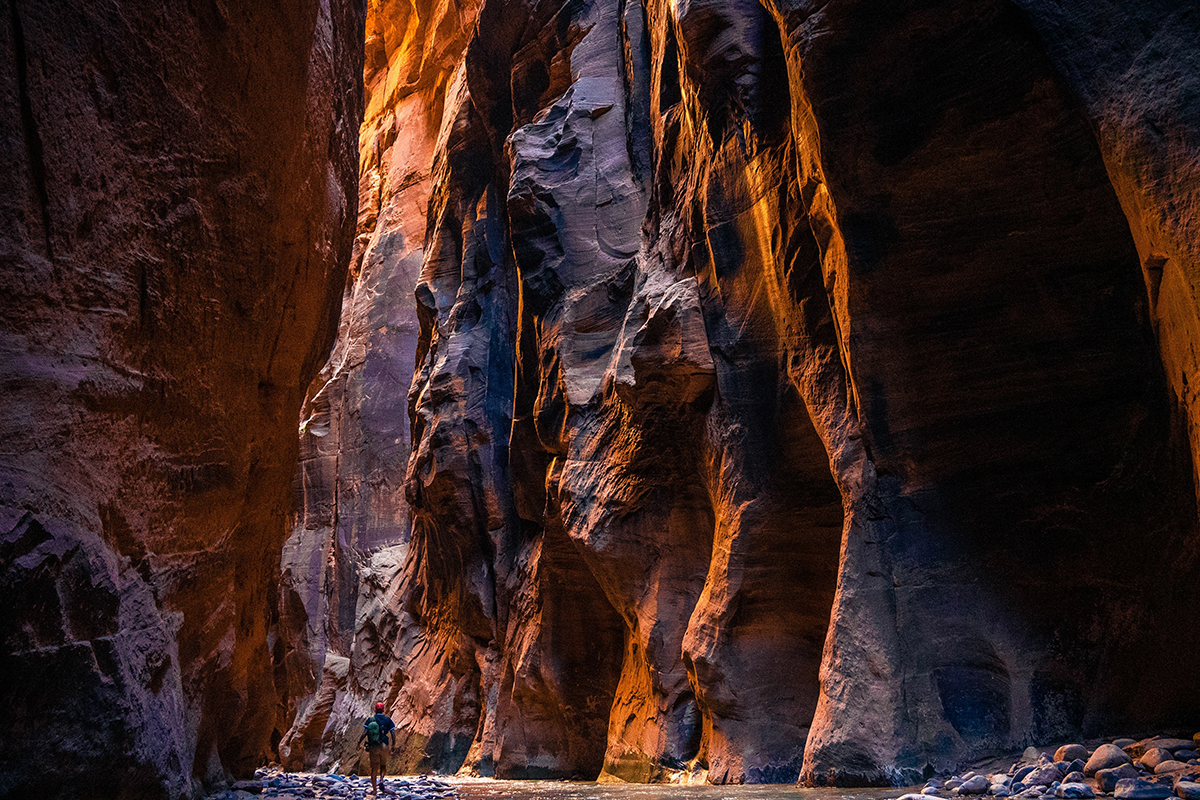
How Many Days Do You Need to Spend in Zion National Park?
You need 2-3 days to appreciate most of the top things to do in Zion National Park. However, exactly how much time you should spend in Zion National Park mainly depends on what you want to do.
At 229 square miles, Zion National Park is small but surprisingly complex. Exploring the park in only one day is possible, assuming you focus on Zion Canyon and the short hikes around it. But if you’re hoping to hike several technical trails like Angel’s Landing and the Narrows, you should plan for two to three full days.
Where to Stay in Zion National Park
We’d divide your Zion National Park lodging options into two categories: Zion Canyon Lodging and camping.
Zion Canyon Lodge
Zion Canyon Lodge is the only in-park lodging at Zion National Park. It is a beautiful lodge located on the canyon floor, tucked against towering cliffs and surrounded by a sprawling green lawn with plenty of shade.
Zion Canyon Lodge offers 76 hotel rooms, 40 historic cabins, and six suites. The property also has a restaurant and a gift shop. Wi-Fi is available at Zion Canyon Lodge, but it's spotty and limited to the front desk and lobby areas. There is also no cell phone coverage, so you'll be off-grid for your stay there.
The rooms at Zion Canyon Lodge range between $220 and $284, which most visitors find expensive. The best part about staying here is not having to worry about parking. There are about 400 parking stalls in the canyon area. Once they get full, the only way to access the canyon area is via the free shuttle service.
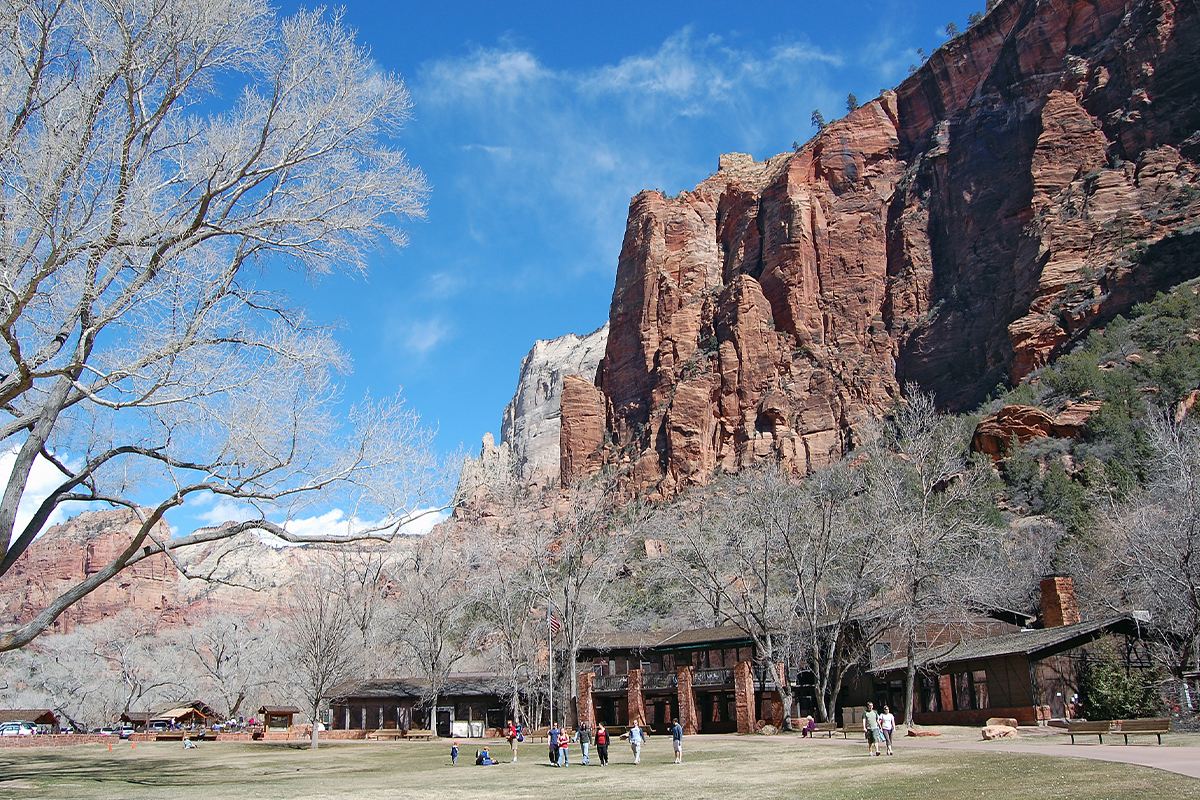
Camping in Zion National Park
Zion National Park offers three campgrounds:
Watchman Campground
Watchman Campground is located roughly two minutes from the more popular Southern Entrance in Springdale. It’s right next to the Zion Canyon Visitor Center by the Virgin River.
This campground has 176 RV, tent, and walk-to sites. Ninety-five sites have electricity hookups, and a dump station is available year-round. The campground has potable water, flush toilets, fire rings, trash collection services, and stunning red rock vistas to boot. There are no showers.
Watchman Campground remains open year-round, but loops D, E, and F are closed during winter. Camping fees range from $10 to $50 per night, depending on the time of year and type of site. Reservations for Watchman Campground sites are available up to six months in advance.
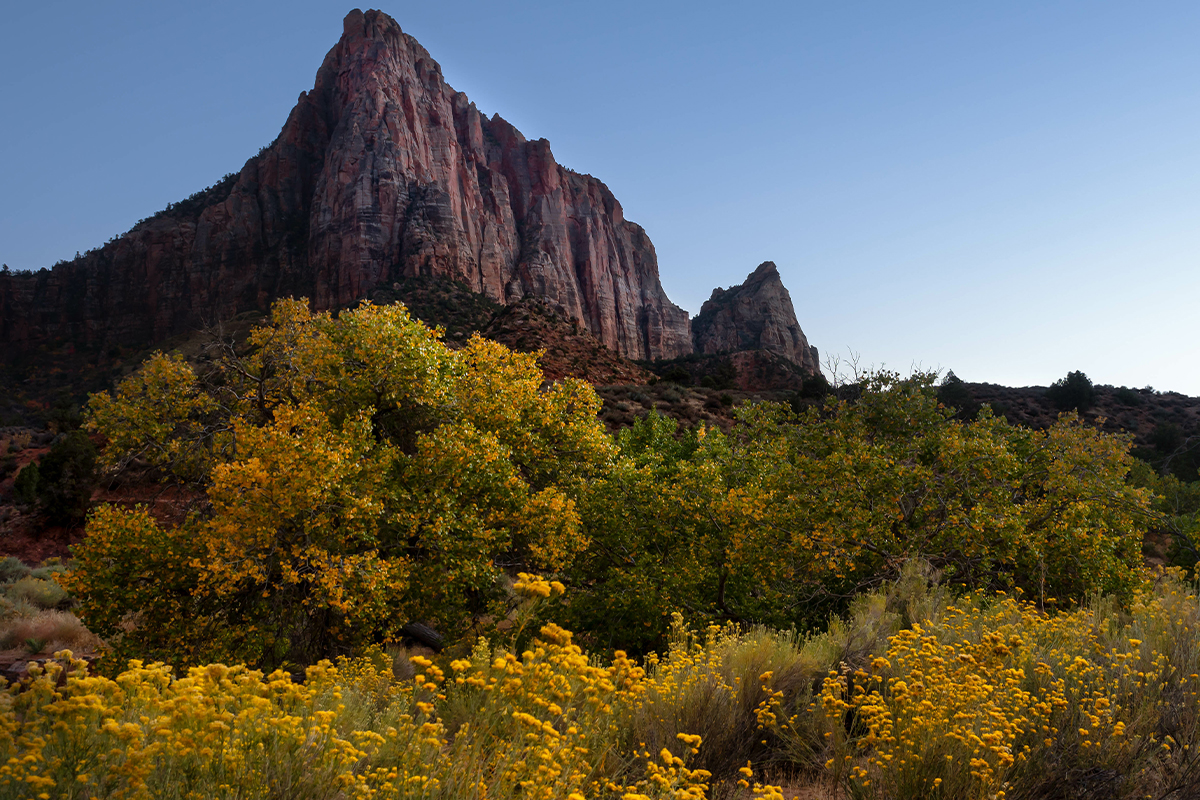
South Campground
South Campground is a minute from the South Entrance, sandwiched between Zion Park Boulevard and Virgin River. The campground is a short walk from the visitor center and the cute little town of Springdale.
South Campground has 121 campsites, including 117 tent and RV sites and four group sites (7-15 people). This campground has a dump station, drinking water, picnic tables, restrooms with flush toilets, fire pits, and fire rings. There are no water and electricity hookups, so prepare for dry camping.
From South Campground, you can access three of the best Zion National Park trails: Watchman Trail, Pa’rus Trail, and Archeology Trail. The Zion Canyon Shuttle stops at the visitor center, putting other must-try trails minutes away.
South Campground opens seasonally from early March through late May. Reservations are available up to 14 days in advance.
Lava Point Campground
Lava Point is a primitive campground located at Zion’s highest point (7890 feet above sea level). It’s about 45 minutes north of the town of Virgin and one hour from the park’s South Entrance.
This campground has six dry camping sites available on a first-come, first-served basis. There are picnic tables, fire rings, pit toilets, and trash receptacles, but no drinking water.
Lava Point Campground is usually open from May through September, weather permitting. All six sites are free.
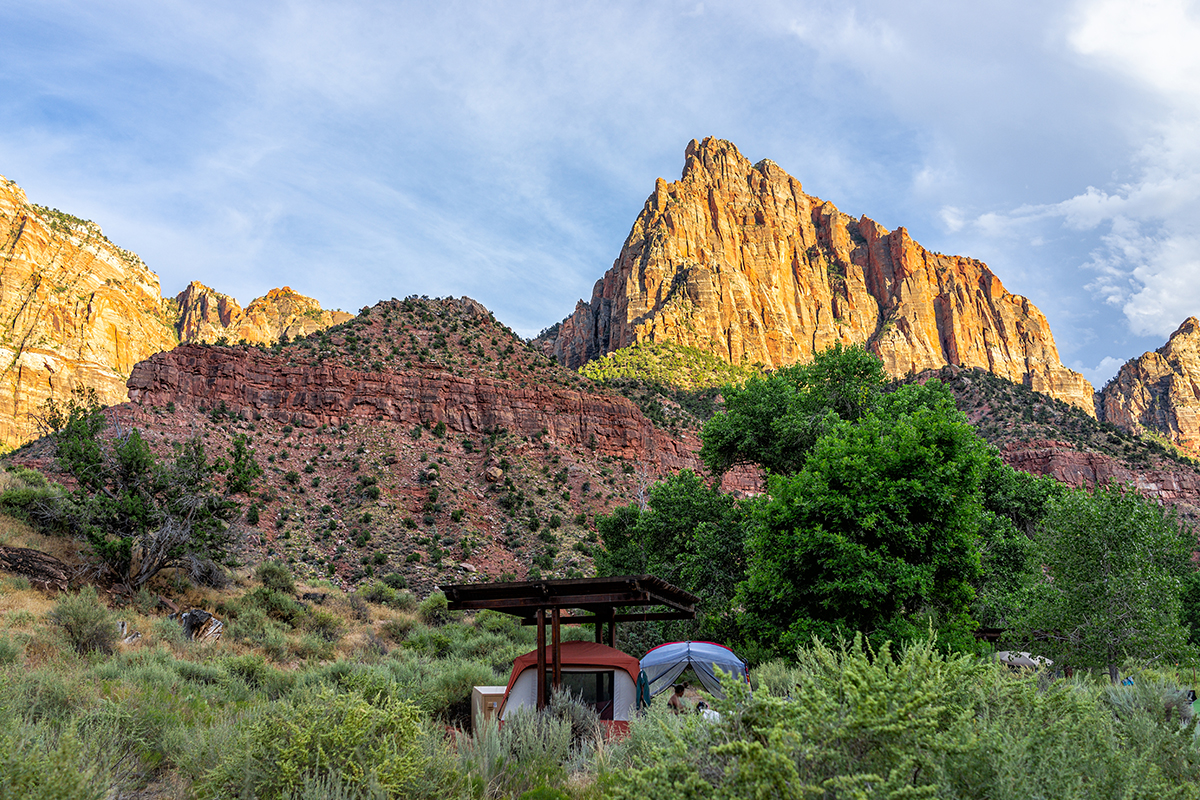
What to Wear When Visiting Zion National Park
The clothes to include in your camping checklist for Zion will significantly vary depending on the time of year.
If you’re visiting in Summer (June, July, and August), expect the desert sun to be intense and the temperatures high. But you’ll be surprised at how shaded (sometimes cold) the inside of the canyons can get, particularly in the morning.
If you plan on hiking some challenging trails, we recommend packing as lightly as possible without leaving out anything crucial. Remember, you’ll be responsible for hauling your backpack wherever you go.
Here are the clothes to include in your backpacking checklist when getting ready for Zion National Park attractions:
- Lightweight, quick-drying hiking shorts
- Comfortable, stretchy yoga pants
- Long-sleeved shirts, quick-drying T-shirts, and fitted tank tops (should help you layer so you stay comfortable as the weather changes)
- Light rain/wind jacket
- Breathable and non-chafing bras and underwear
- Wool socks
- Hat/baseball cap
Proper clothing enhances and guarantees a fun and enjoyable time at Zion National Park. Picking the right items from our collection of women’s hiking clothing and men’s outdoor wear is a great starting point.
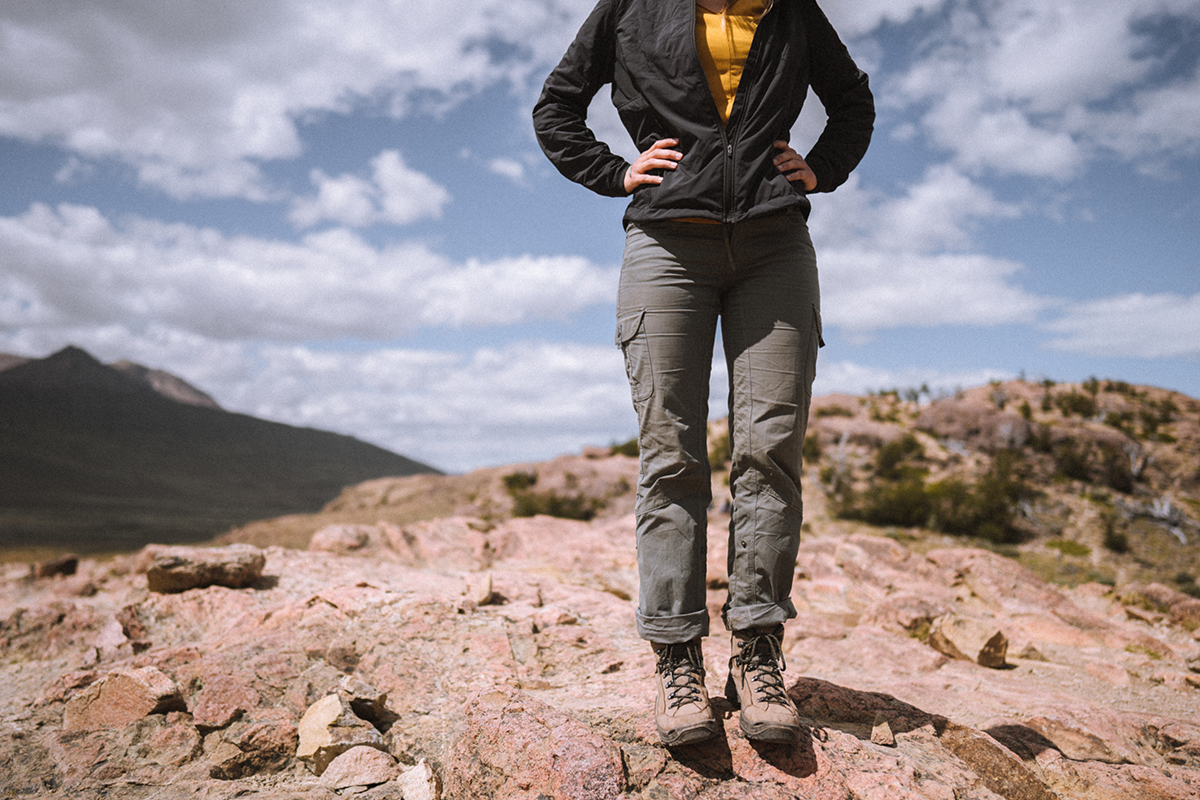
Best Things to Do in Zion National Park
Do the Zion Canyon Scenic Drive
First on most lists of what to do in Zion National Park is usually the Zion Canyon Scenic Drive. This fully paved road runs on the canyon floor alongside the North Fork of the Virgin River.
The Zion Canyon Scenic Drive begins at Zion Park Boulevard/Highway 9 near Canyon Junction Bridge. It stretches for 6.2 miles, passing by the Zion Canyon Lodge and ending at the Temple of Sinawava.
It takes around 20 minutes to do the Zion Canyon Scenic Drive without stops. However, if you plan to stop at the many attractions along the way, the journey could take 6-8 hours. The towering rock formations dubbed the Court of Patriarchs are not to be missed during this scenic drive. Other major stops include the Weeping Rock, Big Bend, the Grotto (a picnic area), and the Temple of Sinawava.
Several of the best hiking trails in Zion also start along this drive, including the Pa’rus Trail, Angel’s Landing Trail, Walter’s Wiggle Trail, and Scout Lookout Trail. If you’re into rock climbing, Touchstone Wall near Big Bend is one of the best spots in Zion National Park for that.
Good to know: Private vehicles are not allowed on the Zion Canyon Scenic Drive from March through November due to congestion. Luckily, there are free shuttle buses that run every six minutes. The buses have numerous stops along the way, so you can hop on and off as you wish.
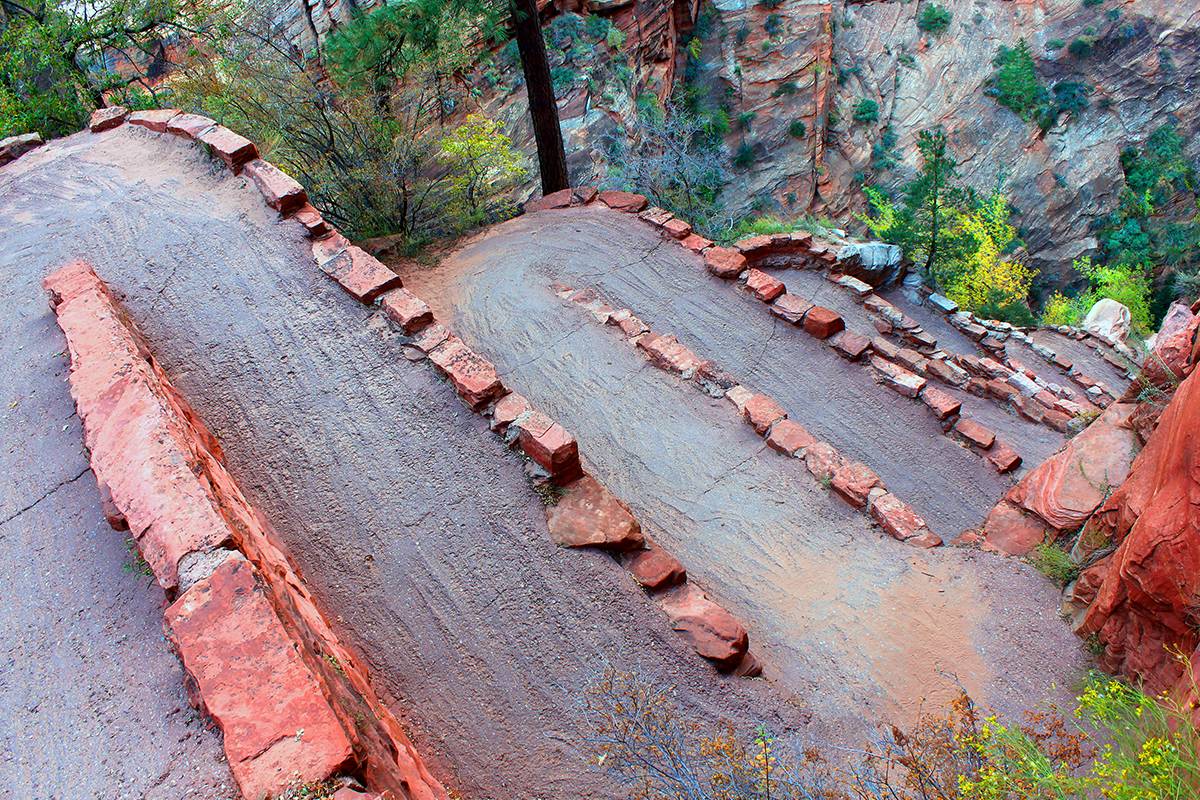
Hit the Zion-Mount Carmel Highway
Driving the Zion-Mount Carmel Highway is by far one of the best things to do at Zion National Park. This is a 12-mile scenic drive that winds through massive rock formations, switchbacks, and narrow tunnels to give you some of the most breathtaking views in the park.
The Zion-Mount Carmel Highway starts at the South Entrance, stretching eastward toward Mount Carmel. Some of the attractions along the way include the Zion Canyon Visitor Center, Zion Human History Museum, the Zion-Mount Carmel Tunnel, and Checkerboard Mesa.
The drive has places to pull off and admire the stunning rock formations, towering cliffs, and wildlife, especially bighorn sheep. You’ll also find the Pa’rus Trail and the Canyon Overlook Trail along this route.
The Zion-Mount Carmel Highway is open to private vehicles throughout the year. Of course, the best time to hit this drive is early in the morning to avoid the crowds and have the overlooks to yourself.
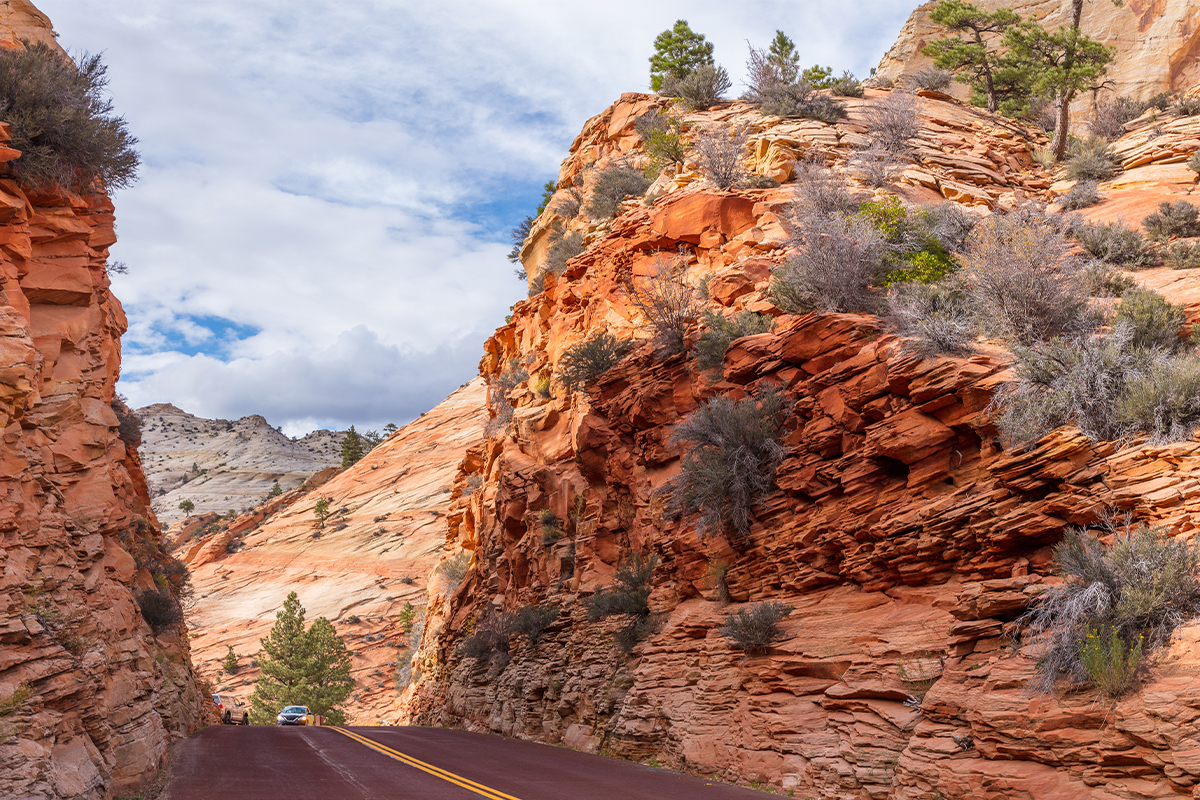
Hike Zion’s Scariest Trail: Angels Landing
The hike to Angel’s Landing is considered among the most thrilling and dangerous in Zion National Park and the country. This hike is not for the faint-hearted, as its series of steep switchbacks (called Watler’s Wiggles) and sheer drop-offs can be mentally challenging.
The Angel’s Landing Trail starts at the Grotto Picnic Area. Start by taking the Footbridge Trail across the Virgin River. Turn right on West Rim Trail, cut across Refrigerator Canyon, and ascend the east wall until you reach Scout Lookout.
Scout Lookout is a good place to admire the stunning panoramic views of the red rock canyon walls. It’s also a good place to turn around if you don’t have the nerves of steel necessary to scale the last 500 feet of elevation to Angels Landing.
The hike to Angels Landing in Zion is only 5.4 miles (roundtrip), but most hikers take 2-4 hours to complete because of the 1488 feet of elevation gain. The best time to hike to Angels Landing is early morning or mid-afternoon. Weather-wise, the ideal time for this hike is spring (March to mid-May).
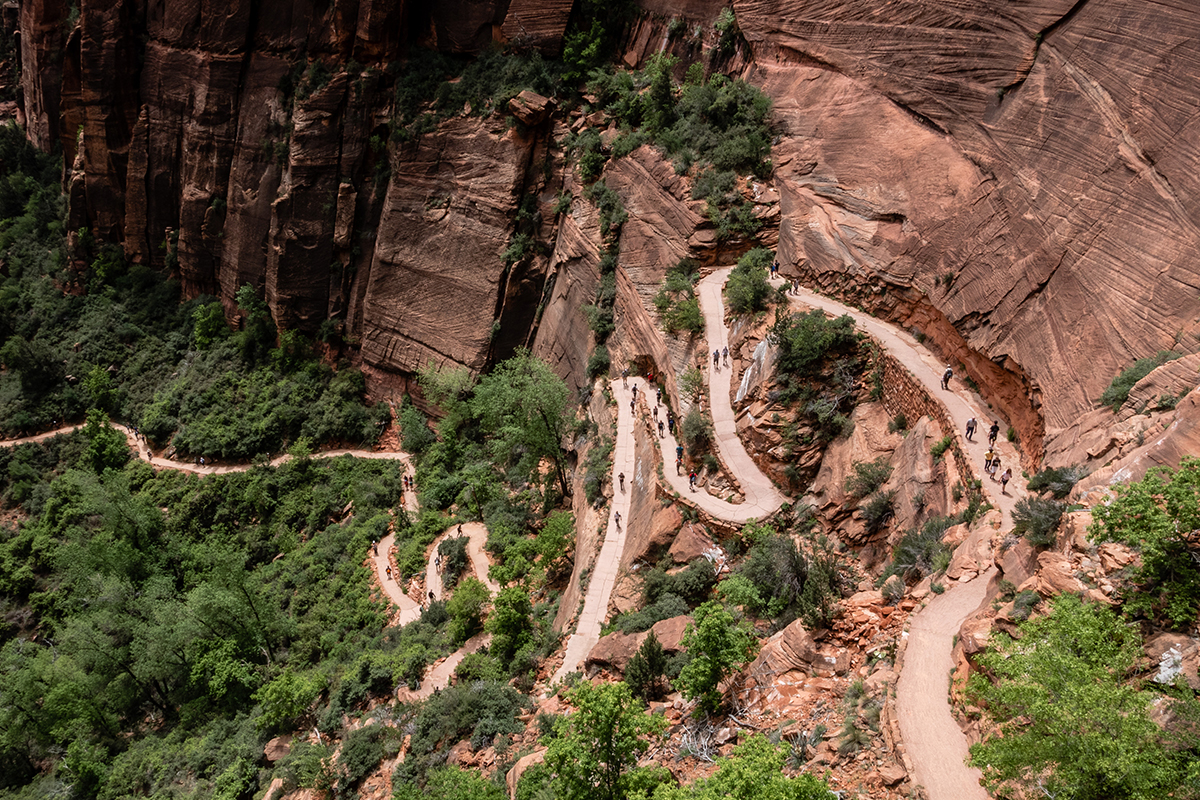
Hike the Zion Narrows
Hiking the Narrows rarely misses a spot on most lists of Zion National Park things to do. This is one of the most famous hikes not only in Utah but also in the world - and for good reason.
The Narrows is the narrowest section of the famous Zion Canyon. It’s unique because, for the most part, you wade on the Virgin River as the trail with walls hundreds of feet tall on both sides.
This hike begins at the Temple of Sinawava (the end of Zion Canyon Scenic Drive). To get to the Narrows from the parking lot, you have to hike about a mile on the Riverside Walk Trail.
The canyon walls are far apart when you start. But as you move in, they start squeezing in, making for more beautiful, albeit scary, views. For the best experience, plan to hike 9-10 miles roundtrip.
The Narrows in Zion National Park is a strenuous hike. The best time for this hike is in the summer and early fall when the water level is low.
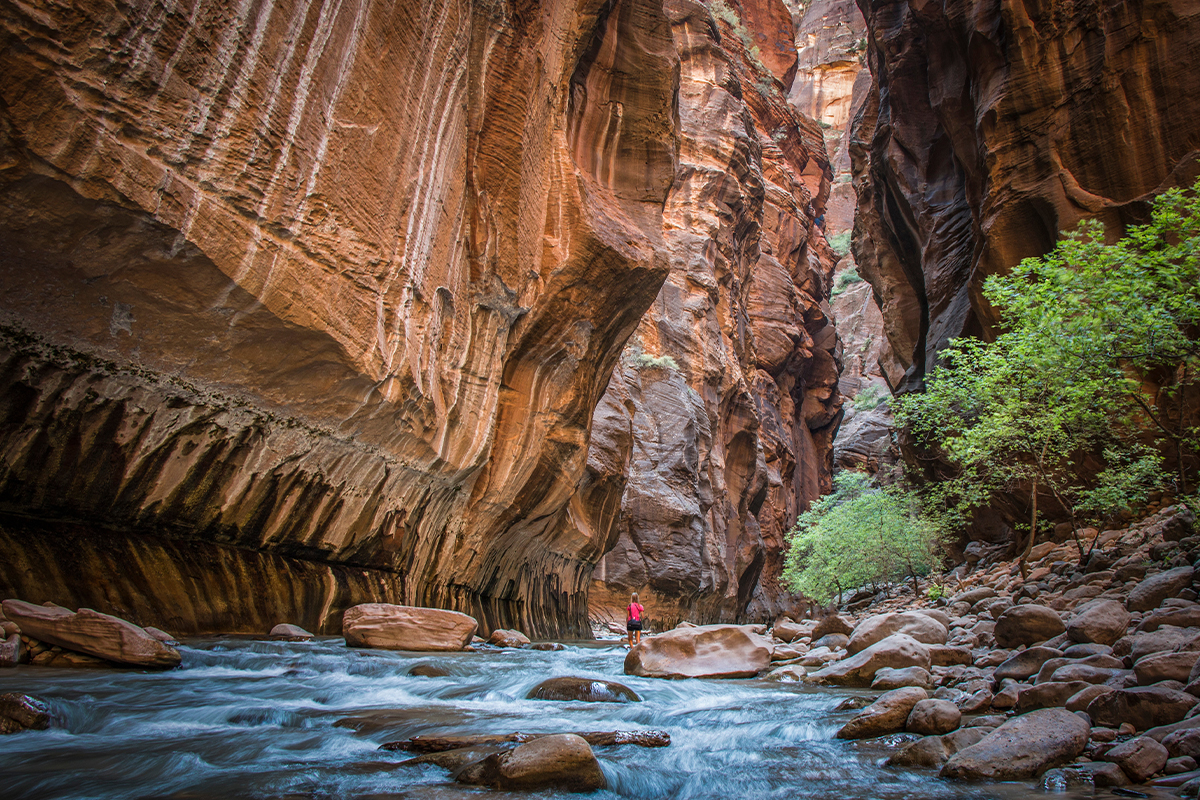
The Subway
The Subway is the second most popular hike in Zion National Park after the Narrows. Adventurous hikers highlight this as one of the best places to visit in Zion National Park. It involves climbing down waterfalls, swimming, and scrambling over boulders, all while inside a subway-like canyon.
There are two ways of hiking the Subway in Zion National Park: top-down and bottom-up. Both options are strenuous and physically demanding, although doing it bottom-up is less technical.
To access the Subway from the Zion Visitor Center, drive southwest on Zion Park Boulevard/UT 9 towards Virgin. After about 12 miles, just before entering the town, take the Kolob Reservoir Road on the right and follow it for 8.2 miles to the Left Fork Trailhead. Follow the trail for 30-40 minutes to reach the canyon entrance.
The Subway hike in Zion is 9.5 miles long (roundtrip) and takes 5-9 hours to complete. Like the Narrows, a Zion Wilderness permit is required to manage the crowds for this hike. The best time to hike the Subway in Zion is late spring and fall when the risk of flash floods is lower and the temperatures are moderate.
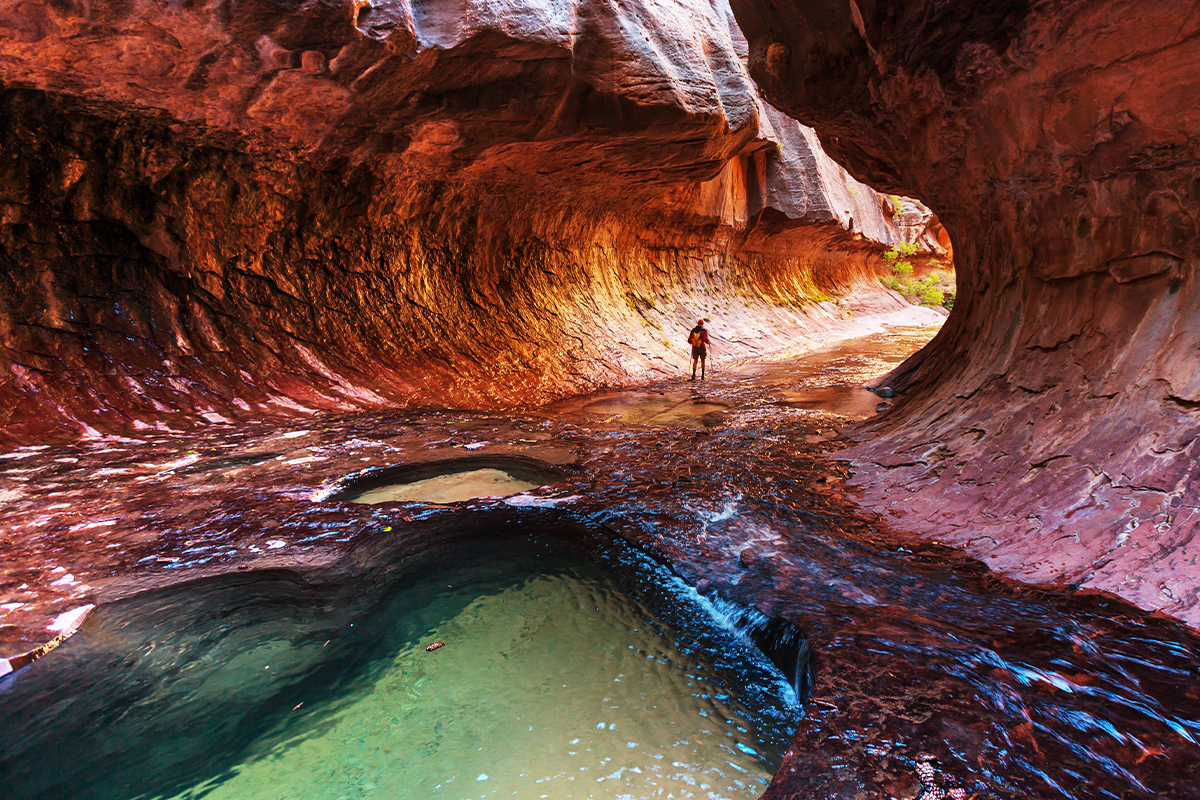
Enjoy the Views of the Court of the Patriarchs
If you’re riding Zion Canyon Drive for the first time, we highly recommend checking out the Court of the Patriarchs. This is another must-see Zion National Park attraction located at the fourth stop of the Zion Canyon Shuttle.
The Court of the Patriarchs is a collection of three peaks named after Old Testament daddies—Abraham, Isaac, and Jacob. The peaks are best viewed from the Court of the Patriarchs Overlook east of the scenic drive. The trail to this overlook is a simple two-minute hike that the whole family can do. The less popular Sand Bench Trail also starts around this area.
The best time to enjoy the views of the Court of the Patriarch is at sunrise or late afternoon.
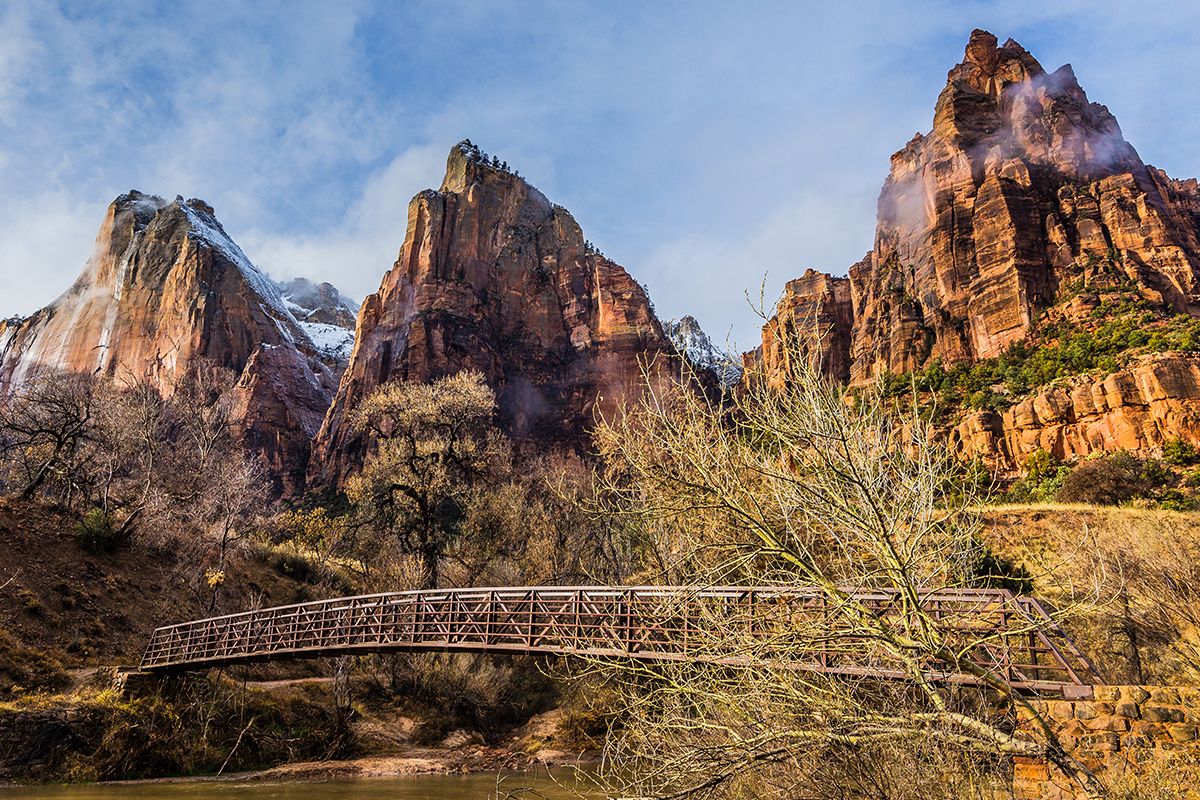
Hike to the Emerald Pools
Hiking to the Emerald Pools is among the top things to do in Zion. Emerald Pools are a series of three small pools around the Zion Canyon Lodge area. During spring or following recent rain storms, this area is also endowed with small but beautiful waterfalls as the water flows from one pool to the other.
The pools are accessed via a network of trails from various directions: Upper Emerald Pool Trail, Middle Emerald Pool Trail, Lower Emerald Pool Trail, and Keyanta Trail.
Parking for Emerald Pools Trail is sandwiched between Virgin River and the Zion Canyon Lodge Parking Lot. If you’re riding the shuttle from the Zion Canyon Visitor Center or museum, alight at Stop 5 and cross the Virgin River to reach the trailhead. From here, you can take the Lower Emerald Pools Trail or the Middle Emerald Pools Trail if you desire. We recommend taking the paved and handicapped-accessible Lower Emerald Pool Trail first so you can see all three pools in order from lower to upper.
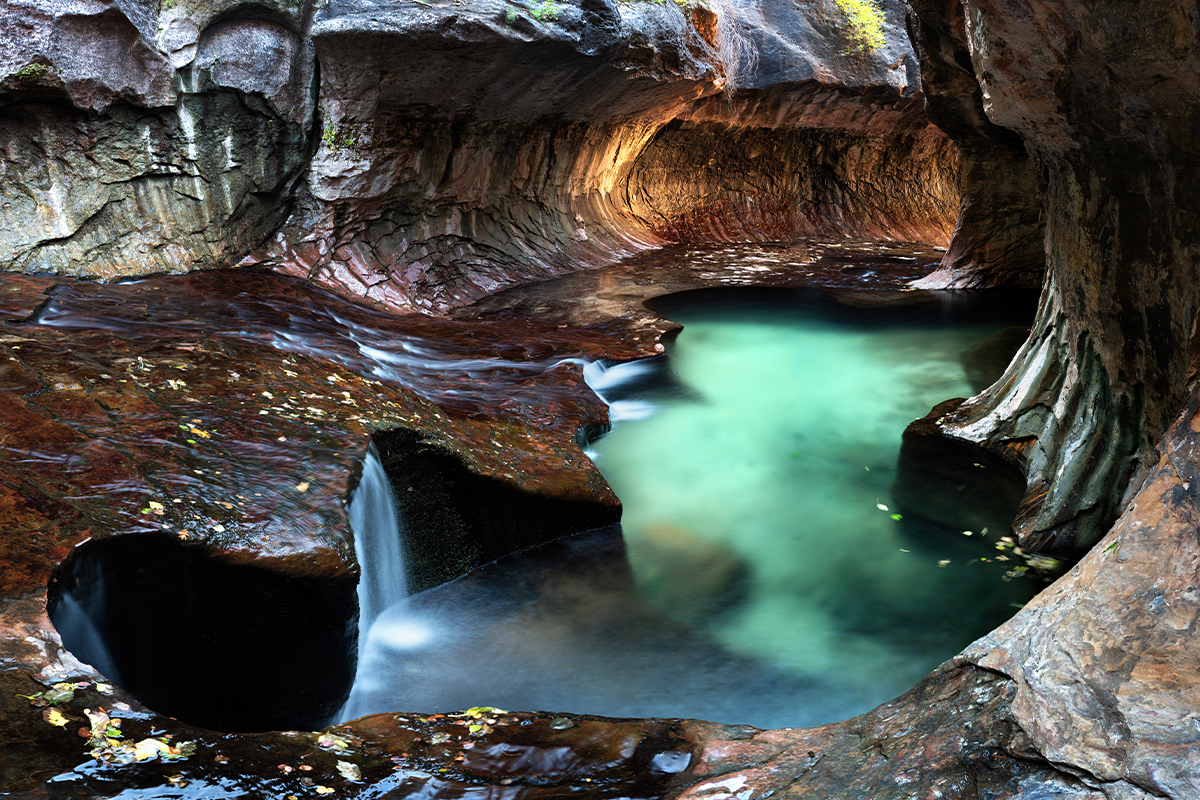
Drive through the Zion-Mount Carmel Tunnel
This historic tunnel is another unmissable Zion National Park must-see on the Zion-Mount Carmel Highway. It is a 1.1-mile tunnel with windows cutting through an imposing rock. It was completed in 1930 at $1,896,000 and has maintained its charm since then.
Back in the day, the Zion-Mount Carmel Tunnel was considered an engineering marvel due to the overall design, planning, and skills involved in its construction.
You won’t need to plan a trip to the tunnel if you’re coming into the park through the East Entrance. The highway passes through the tunnel heading to Springdale.
Please note that the Zion-Mount Carmel Tunnel is often closed for one-way traffic only to allow larger vehicles to pass. You may have to wait for up to 20 minutes before you’re allowed to go into the tunnel.
Also, the tunnel has length restrictions of 40 feet for single vehicles and 50 feet for combined vehicles. Any time is a good time to drive through this iconic tunnel.
Check Out the Checkerboard Mesa
The Checkerboard Mesa is one of the fascinating rock formations on the Zion-Mount Carmel Highway, just after the tunnel. If you’re approaching the park from the east, the Checkerboard Mesa is about two-tenths of a mile from the East Entrance Ranger Station.
This rock formation gets the name Checkerboard from the distinctive vertical and horizontal pattern covering its surface. There are small pull-offs that offer sweeping views of the mesa from the road. However, keen photographers may prefer the views from the base of this unique rock formation.
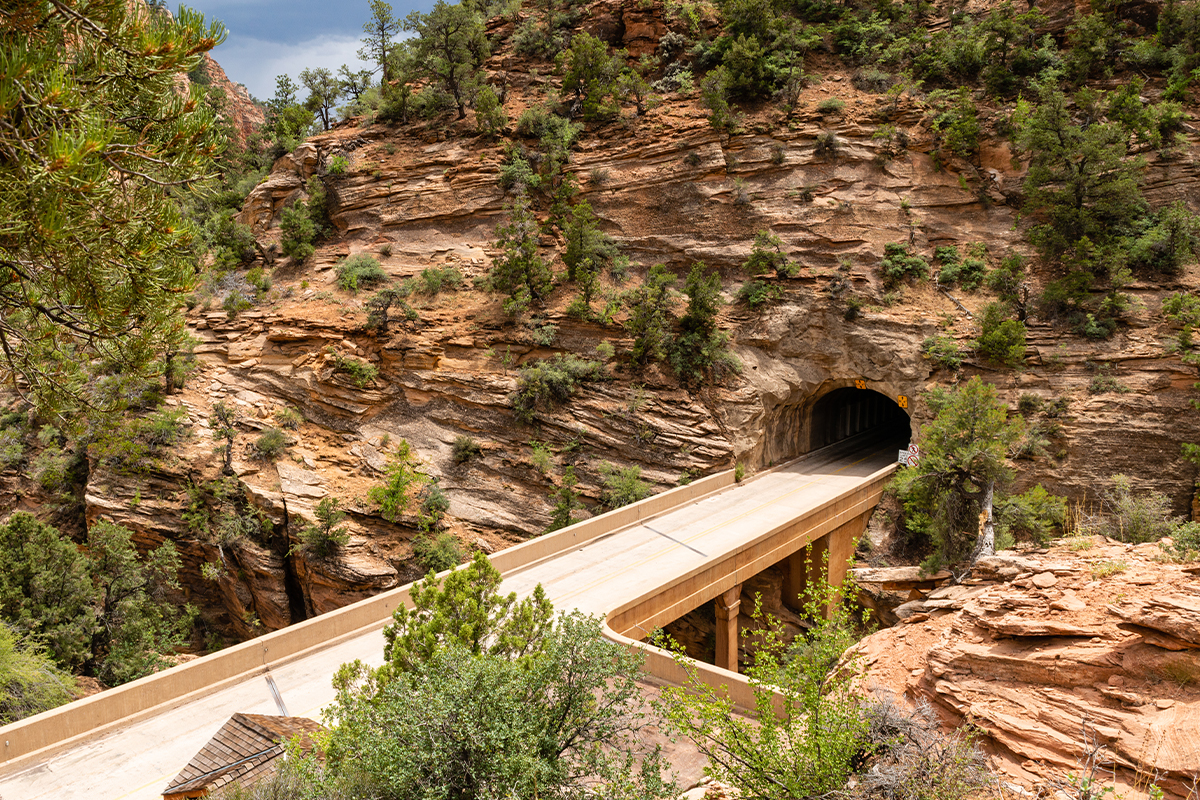
See the Zion Human History Museum
For those who want to learn more about Zion's human and geologic history, this museum is among the best places to see in Zion National Park.
The Zion Human History Museum is located 0.9 miles or a two-minute drive north of the park’s South Entrance. It features permanent exhibits showcasing a variety of cultures that have occupied the park for over 12,000 years.
The exhibits also tell a story of how water (a creator and destroyer) has helped shape and transform the Zion landscape into the sanctuary it is today. A 22-minute 3D movie of the park’s history is another way of experiencing this museum as you cool off from the summer heat.
The Zion Human History Museum is free for all park visitors. The best time to visit it is early morning due to the limited parking space. Museum Trail and Pa'rus Trail are easily accessible around this area.
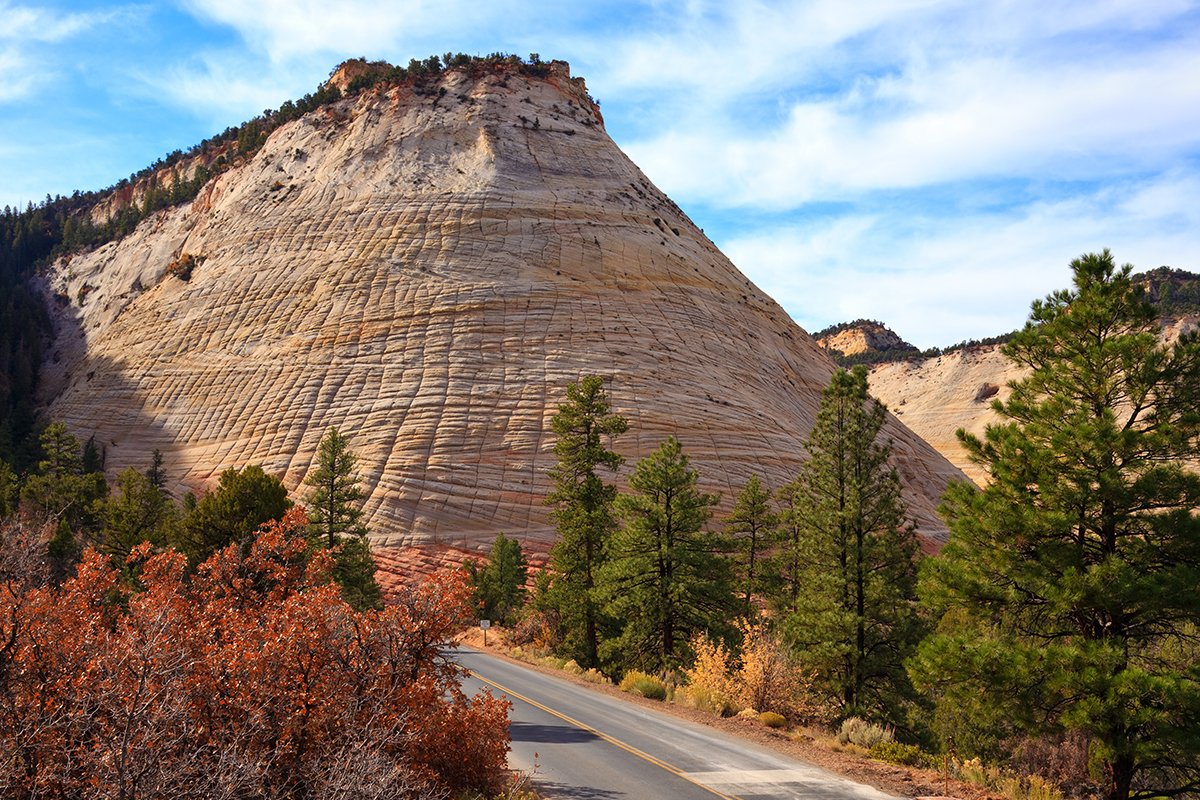
Final Thoughts
Zion National Park was recently crowned America’s most beautiful national park - but that’s no anomaly for a park in south Utah. A stunning red rock playground with a unique microclimate, we think Zion is a worthy consideration on any bucket list.
Over five million visitors visit this park annually, pulled by its mystic canyons, soaring slot canyons, and otherworldly views.
Although it’s impossible to fit the best of Zion National Park activities in one sitting, the attractions highlighted in this guide are a must-do!
Featured image by: Alex Azabache
FAQs
Is Zion National Park free?
There is a fee to enter Zion National Park except for youths 15 and under. The standard entrance fee is $20 per person (bicyclists, hikers, and pedestrians), $30 for motorcyclists, and $35 per private vehicle with a passenger capacity of up to 15.
Can you do Zion in a day?
It’s possible to experience Zion in a day with proper planning. This requires arriving early and relying on the park shuttle to move around the park. If you plan hiking, you’ll need to focus on easy and short hikes to allow time for other activities.
Can you drink Zion water?
It’s recommended not to drink water from the rivers or streams in Zion National Park before boiling.
Can you drive yourself in Zion?
Yes - you can drive yourself on most roads inside the park throughout the year. There are four main roads in Zion National Park. You’re able to drive yourself freely on Kolob Canyons Road, Kolob Terrace Road, and Zion-Mount Carmel Road (Highway 9) year-round. Zion Scenic Drive is open throughout the year, but with some exceptions, you can only drive this route from November to late February when the shuttle system is not operating. Only those staying at Zion Canyon Lodge and those heading to the horseback trailhead can drive the Zion Scenic Drive during the peak season.
Is it safe to hike in Zion alone?
Hiking in Zion National Park is generally safe for everyone, including solo hikers, especially if you remain on easier and more popular hikes. If you plan on hiking to a remote area in the park, talk to a park ranger at the visitor center and let them know your plans.
What should I pack for Zion National Park?
Here’s what to pack when preparing for the activities in Zion National Park:
- Layered clothing
- Sturdy hiking shoes
- Hiking socks
- Refillable water bottle/rehydration bladder
- Rain jacket
- Hiking poles
- Chapstick
- Sunscreen
- Bug spray
- Sunglasses
- A basic first aid kit (use this first aid checklist to prepare your own)


